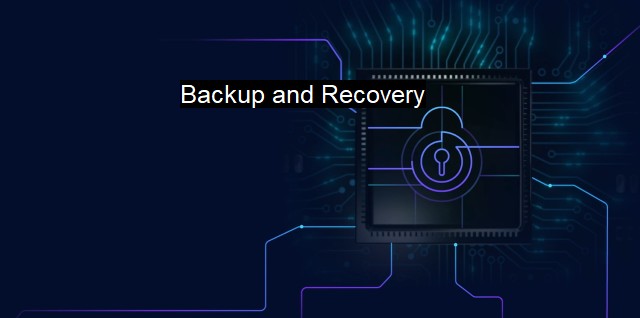What is Backup and Recovery?
The Role of backup and recovery in Cybersecurity: Safeguarding Sensitive Data and Resuming Business Operations in Adverse Events
"Backup and Recovery" is an integral part of any cybersecurity strategy that refers primarily to the process of creating copies of data (backup) and resuming their use after an event of data loss (recovery). backup is the action of saving and storing copies of files, applications, and other digital assets in a secure location, disengaged from the original, to protect data from multiple threats, such as system corruption, accidental deletion, cyber-attacks, natural disasters and other mishaps.These backups can then be leveraged during the recovery process to restore lost or corrupted data and hasten the system's return to its normal, functional state after an adverse event. Recovery thus mitigates the damaging effects of data loss on organizations and individuals, ensuring the continuity of their digital operations.
In the protection ecosystem, there are different forms of backup. There is a full backup which creates a copy of every single file in a system or data set. It is typically the most time-consuming and storage-exhaustive backup. Though, it provides the most comprehensive snapshot of data at a specific moment in time. The incremental backup only copies files that have been changed or added since the last backup of any type occurred. This method requires less storage space and is quicker. The differential backup makes a copy of all data altered since the last full backup, often requiring more space than incremental but less than a full backup.
Backup locations vary, but the most common versions are local backups on external media such as hard drives, network-attached storage, or a dedicated backup server or offsite backups on cloud-based storage. Considerations for where and how to store backups need to take into account the confidentiality, accessibility, and redundancy of that data. For these reasons, many companies prefer to use a robust combination of on-site and off-site storage working concurrently.
In recovery, the speed and completeness of the data retrieval play a crucial role. When systems go offline, companies risk losing revenue, client trust, and potentially violate industry regulations. Quick, complete recovery operations substantively reduce these related risks. This timing shows how vital foundational elements, like the recovery time objective (RTO) and recovery point objective (RPO), are, with the former being the time within which work needs to resume after any disruption and the latter being the maximum age at which files must be recovered from backup to keep the business operational.
Working together, backup and recovery operations act to increase an organization's resilience in the face of potential cyber threats. they must be coupled with other cybersecurity efforts to provide optimal protection. Antiviruses are vital components that guard against various online threats. These software programs work by identifying and eliminating potential threats before they infiltrate a system and can erase harmful software after they've breached the system. if the data is significantly corrupted or lost due to such attacks, the recovery from backup data becomes pivotal.
"Backup and Recovery" is an integral component of cybersecurity. The structured and frequent backup of data ensures the durability of digital assets safeguarded from plethora cyber threats. The repeated and tested recovery processes aid in swiftly returning to functional business operations post any disruption. Joined alongside other cybersecurity measures like antivirus software, they provide a critical layer of defense, thereby enabling the sustainable functionality of the digital assets they protect. constant vigilance and habitual security tune-ups still prove their worth as the technical landscape, and related threats persistently evolve.

Backup and Recovery FAQs
What is backup and recovery in the context of cybersecurity and antivirus?
Backup and recovery in cybersecurity and antivirus refers to the process of creating duplicate copies of important data and system configurations to protect against data loss or corruption caused by malware or cyber attacks. Recovery involves restoring these backups in the event of an incident.What are the benefits of having a backup and recovery plan in place for cybersecurity and antivirus?
Having a backup and recovery plan in place helps to ensure that in the event of a cyber attack, data loss or corruption, the organization can quickly and efficiently restore critical systems, data, and configurations. This can minimize downtime, reduce financial losses, and help to maintain business continuity.How frequently should backups be performed in a cybersecurity and antivirus context?
Backup frequency will depend on the organization's particular needs and levels of risk. However, it is typically recommended to perform regular backups at least once a day, with additional backups before and after significant changes to critical systems or configurations.What are some best practices for implementing backup and recovery in the context of cybersecurity and antivirus?
Some best practices include regularly testing backups to ensure they are working effectively, storing backups in secure offsite locations to prevent data loss in case of a physical breach, using encryption to protect sensitive data, and implementing a robust incident response plan that involves backups and recovery procedures.| | A | | | B | | | C | | | D | | | E | | | F | | | G | | | H | | | I | | | J | | | K | | | L | | | M | |
| | N | | | O | | | P | | | Q | | | R | | | S | | | T | | | U | | | V | | | W | | | X | | | Y | | | Z | |
| | 1 | | | 2 | | | 3 | | | 4 | | | 7 | | | 8 | | |||||||